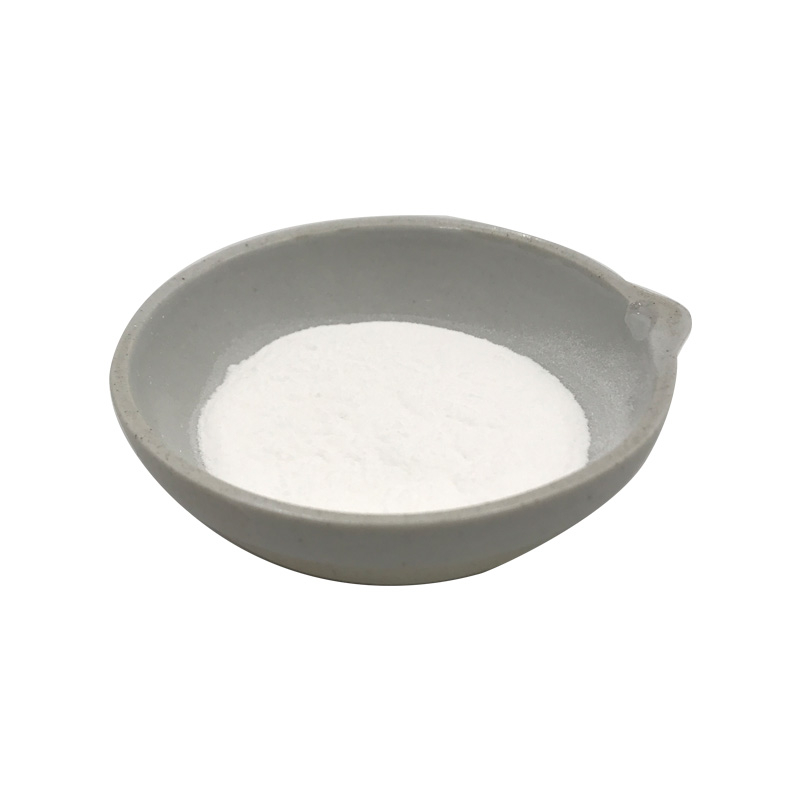Products Description of 4-Hydroxy-2-butanone CAS#590-90-94-Hydroxy-2-butanone is a component of bark beetle powder used to lure and kill bark beetles. It forms a complex with a Ziegler-Natta catalyst and is used as a catalyst for the stereospecific polymerization of butadiene and an organic synthesis intermediate.
Contact Now
Potassium Formate CAS#590-29-4Potassium formate is a useful chemical compound in the production of potassium metal and in the oil and gas industry, often in aqueous solution (alone, or mixed with cesium formate), to yield a high-density, environmentally-friendly brine that can be used a a heat transfer fluid.
Contact Now
Products Description of 2-Hydroxy-4-methylpyrimidine hydrochloride CAS#5348-51-62-Hydroxy-4-methylpyrimidine hydrochloride CAS No.
Contact Now
Products Description of 4-(3-AMINOPHENYL)-2-METHYLPYRIMIDINE CAS#175201-90-83-(2-Methylpyrimidine)aniline is a chemical.CAS No.
Contact Now
Products Description of 2-HYDROXY-3-METHYLPYRIDINE CAS#91914-04-4White powder2-HYDROXY-3-METHYLPYRIDINE Chemical PropertiesBoiling point 292.1±20.0 °C(Predicted)density 1.120±0.06 g/cm3(Predicted)storage temp. under inert gas (nitrogen or Argon) at 2-8°Cpka10.37±0.10(Predicted)CAS DataBase Reference91914-04-4(CAS DataBase Reference)Factory and Equipment ShowFast transport timeInventory 2-3 working days New manufacturing 7-10 working days
Contact Now
Products Description of Salicylaldehyde CAS#90-02-8Salicylaldehyde is a light yellow oily clear liquid with a melting point of -7°C and a boiling point of 197°C. It has a burning and almond smell.
Contact Now
Products Description of 2-Hydroxy-3-trifluoromethylpyridineCAS#22245-83-62-Hydroxy-3-trifluoromethylpyridine, as a pyridine derivative, plays an important intermediate role in the chemical industry, medical and pesticide fields, etc.2-Hydroxy-3-trifluoromethylpyridine Chemical PropertiesMelting point 150-153°CBoiling point 223.7±40.0 °C(Predicted)density 1.398±0.06 g/cm3(Predicted)storage temp. Inert atmosphere,Room Temperatureform powder to crystalpka9.67±0.10(Predicted)color White to Almost whiteInChIInChI=1S/C6H4F3NO/c7-6(8,9)4-2-1-3-10-5(4)11/h1-3H,(H,10,
Contact Now
Products Description of Propiconazole CAS#60207-90-1he triazole compound propiconazole (Pcz), 1-[[2-(2,4- dichlorophenyl)-4-propyl-1, 3-dioxolan-2-yl]methyl]-1,2,4-triazole, is a kind of triazole fungicide (Fig. 1). It is used extensively in a variety of applications. It is used on grasses grown for seed, mushrooms, corn, wild rice, peanuts, almonds, sorghum, oats, pecans, apricots, peaches, nectarines, plums and prunes.
Contact Now
Products Description of 2-Aminothiazole-4-acetic acid CAS#29676-71-9 It is prepared by condensing ethyl chloro or bromoacetyl acetate with thiourea and then hydrolyzing it.2-Aminothiazole-4-acetic acid Chemical PropertiesMelting point 130 °C (dec.)(lit.)Boiling point 399.0±17.0 °C(Predicted)density 1.367 (estimate)vapor pressure 1.03-1.15hPa at 20℃refractive index 1.6430 (estimate)storage temp. -20°Csolubility DMSO (Slightly)pka3.20±0.10(Predicted)form solidcolor WhiteWater Solubility 6.5 g/L (20 ºC)BRN 127415Stability:Unsta
Contact Now
Products Description of 4-Pyridazinecarboxylic Acid CAS#50681-25-94-Pyridazinecarboxylic Acid is a commonly used chemical raw material, often used as a pharmaceutical intermediate.4-Pyridazinecarboxylic Acid CAS#50681-25-9 Chemical PropertiesMelting point 244.2 °C (dec.) (lit.)Boiling point 404.2±18.0 °C(Predicted)density 1.403±0.06 g/cm3(Predicted)storage temp. Sealed in dry,Room Temperatureform powder to crystalpka3.18±0.10(Predicted)color White to Almost whiteInChIInChI=1S/C5H4N2O2/c8-5(9)4-1-2-6-7-3-4/h1-3H,(H,8,9)InChIKeyJUSIWJONLKBPDU-UHFFFAOYSA-NS
Contact Now
Products Description of Ethylene dimethacrylate CAS#97-90-5Ethylene glycol dimethacrylate is a diester, meaning there are two alcohol/acid combinations in one organic compound or monomer. Industries often combine this substance with other chemicals to make plastics or rubber.
Contact Now
Products Description of 4-Aminotetrahydropyran CAS#38041-19-94-Aminotetrahydropyran can be used as an organic synthesis intermediate and pharmaceutical intermediate4-Aminotetrahydropyran Chemical PropertiesBoiling point 60 °Cdensity 0.977 g/cm3 at 25 °Crefractive index n20/D 1.463Fp 54°Cstorage temp. Keep in dark place,Inert atmosphere,2-8°Cpka9.63±0.20(Predicted)form liquidcolor ColourlessInChIKeyAHVQYHFYQWKUKB-UHFFFAOYSA-NCAS DataBase Reference38041-19-9(CAS DataBase Reference)Safety InformationHazard Codes Xi,XnRisk Statements 10-34-41-
Contact Now
Calcium beta-hydroxy-beta-methylbutyrate Chemical PropertiesMelting point >215°C (dec.)storage temp. Inert atmosphere,Room Temperaturesolubility Water (Slightly)form Powdercolor WhiteWater Solubility Soluble in water.Stability:HygroscopicInChIInChI=1S/C5H10O3.Ca.2H/c1-5(2,8)3-4(6)7;;;/h8H,3H2,1-2H3,(H,6,7);;;InChIKeyWLJUMPWVUPNXMF-UHFFFAOYSA-LSMILESC(C(=O)O)C(O)(C)C.[Ca]CAS DataBase Reference135236-72-5(CAS DataBase Reference)Safety InformationHS Code 2920907090Product Application of Calcium beta-hydroxy-beta-methylbutyrate CAS#135236-72-5Used as phar
Contact Now
Chlorobenzene CAS# 108-90-7Chlorobenzene is a monocyclic fragrant compound with one hydrogen atom on the benzene ring substituted with one chlorine. It is produced by means of chlorination of benzene in the liquid segment with a catalyst. Chlorobenzene is a colourless, flammable liquid with a candy almond-like odor, at ambient temperature with a incredibly excessive vapour pressure, reasonable octanol-water partition coefficient (log 2.8) and average to low water solubility (497.9 mg/L @ 25℃).
Contact Now
Zirconium, chloro glycine hydroxy aluminum complexes CAS#90604-80-1Factory and Equipment ShowFast delivery timeInventory 2-3 working days New production 7-10 working days
Contact Now
Products Description of 4-Amino-2-chloropyridineCAS#14432-12-3This product is white crystals, m.p.89~91℃, insoluble in water.4-Amino-2-chloropyridine Chemical PropertiesMelting point 90-94 °C(lit.)Boiling point 153°C 5mmdensity 1.2417 (rough estimate)refractive index 1.5110 (estimate)Fp 153°C/5mmstorage temp. Keep in dark place,Sealed in dry,Room Temperaturesolubility DMSO (Slightly), Methanol (Slightly)pka4.73±0.30(Predicted)form Crystalline Powdercolor Light yellowWater Solubility Slightly soluble in water.BRN 108671InChIKeyBLB
Contact Now
Products Description of (TETRAHYDRO-2H-PYRAN-4-YL)METHANOL CAS#14774-37-9(Tetrahydro-2H-pyran-4-yl)methanol is a basic organic chemical raw material and high-quality fuel.(TETRAHYDRO-2H-PYRAN-4-YL)METHANOL Chemical PropertiesBoiling point 105 °Cdensity 1.000±0.06 g/cm3(Predicted)Fp 61°(142°F)refractive index 1.4600storage temp. Sealed in dry,Room Temperatureform clear liquidpka14.85±0.10(Predicted)color Colorless to Light yellow to Light orangeWater Solubility Slightly soluble in water.CAS DataBase Reference14774-37-9(CAS DataBase Reference)Safety I
Contact Now
2'-Hydroxyacetophenone CAS#118-93-4Overview:2'-Hydroxyacetophenone, also known as ortho hydroxy acetophenone, is an organic compound with the chemical formula C8H8O2 and the CAS number 118-93-4.This light yellow liquid is recognized for its diverse applications in various industries, including pharmaceuticals and fragrancesProduct Specifications:Molecular Formula: C8H8O2Molecular Weight: 136.15 g/molAppearance: Clear yellow to brown liquidMelting Point: 4 to 6°CBoiling Point: 213°C at 717 mm HgDensity: 1.131 g/mL at 25°CRefractive Index: 1.558 at 20°C
Contact Now
Products Description of 4-Methylbenzenesulfonhydrazide CAS#1576-35-8p-Toluenesulfonylhydrazine, also known as 4-methylbenzenesulfonylhydrazine, is a white crystalline powder, easily soluble in alkali, soluble in methanol, ethanol and butanone, slightly soluble in water and aldehydes, and insoluble in benzene and toluene. It is used as a foaming agent for natural rubber, synthetic rubber and a variety of plastics, making plastics and rubber products have fine closed-cell structures, small shrinkage and high tear strength.
Contact Now
Products Description of 4-Methylbenzenesulfonhydrazide CAS#1576-35-8p-Toluenesulfonyl hydrazide, also known as 4-methylbenzenesulfonylhydrazide, is a white crystalline powder, easily soluble in alkali, soluble in methanol, ethanol and butanone, slightly soluble in water and aldehydes, and insoluble in benzene and toluene. It is used as a foaming agent for natural rubber, synthetic rubber and various plastics to produce fine closed-cell structures in plastics and rubber products. The products have small shrinkage and high tear resistance.
Contact Now
Products Description of Citric acid CAS#77-92-9Zinc Phosphate (CAS#7779-90-0) is an inorganic compound that appears as a white, odorless powder. It is a zinc salt derived from phosphoric acid and is characterized by its stable properties and low solubility in water. The chemical formula for Zinc Phosphate is Zn3(PO4)2, and it has a molecular weight of 422.12 g/mole. This compound is commonly used as a corrosion inhibitor, particularly in primer paints due to its ability to provide cathodic protection.
Contact Now
Kojic acid CAS# 501-30-4Kojic acid (CAS# 501-30-4) is a natural compound produced by microbial fermentation and is commonly found in the metabolites of Aspergillus and penicillium fungi. The chemical name was 5-hydroxy-2-hydroxymethyl-4h-pyrano-4-one. The molecular form was ₆. H₆O₄, and the molecular weight was 142.11. Kojic acid has a certain acidity and is relatively stable in acidic and neutral environments.
Contact Now
Products Description of (2-Bromoethyl)benzene CAS#103-63-9β-Bromophenylethane is an important intermediate for the synthesis of highly efficient brominated flame retardant polybrominated styrene, and is also commonly used in the preparation of organic synthesis intermediates. For example, β-Bromophenylethane can be used to prepare 4-(4-phenylbutoxy)benzoic acid, an intermediate for preparing pranlukast. Pranlukast was first successfully developed by Ono Co., Ltd. of Japan as an anti-asthma drug and was launched in Japan in 1995.
Contact Now
Products Description of DL-Mandelic acid 99% CAS#90-64-2Mandelic acid is a large molecular weight fruit acid that is lipophilic. Compared with the common fruit acid-glycolic acid, mandelic acid has certain antibacterial ability. At the same time, compared with common glycolic acid and lactic acid, its penetration rate into Chemicalbook skin will be slower, which means that it is less irritating than glycolic acid. Its fat solubility is increased and the ability of stratum corneum to penetrate the skin is improved.
Contact Now


































